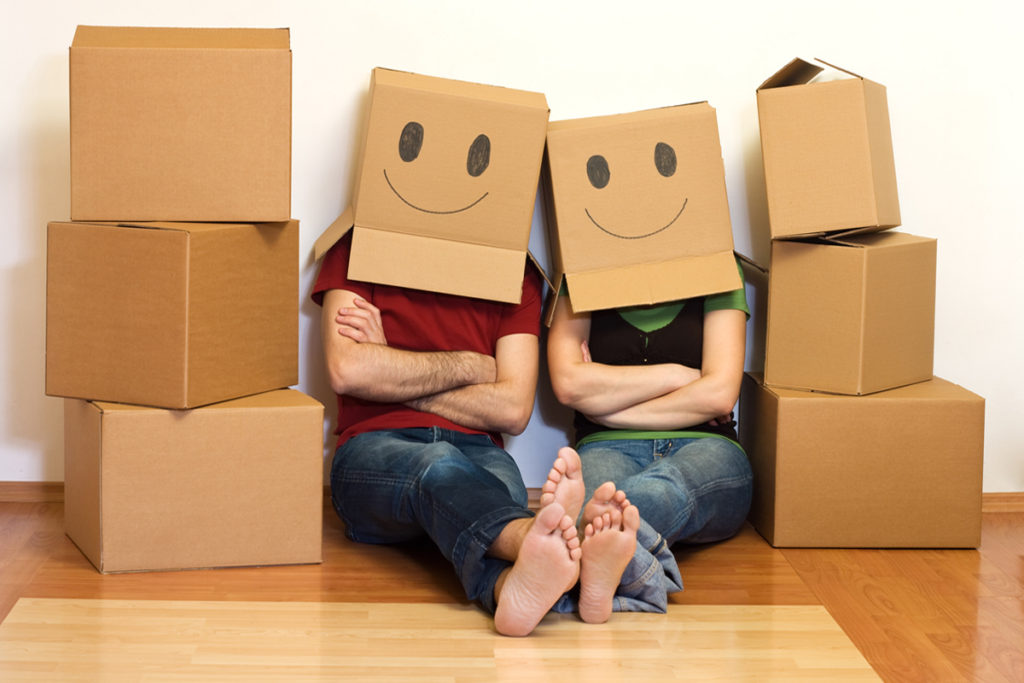Moving into a new place is a significant milestone, marking the start of a fresh chapter in your life. After the moving truck has driven away and the boxes are stacked in every room, it’s easy to feel overwhelmed by the tasks ahead. However, knowing what to do after moving can help you settle in more smoothly and quickly turn your new house into a home. This guide will explore essential steps to take immediately after your move, what to do when you move to a new city, and activities after the move that can help you acclimate to your new surroundings.
Essential Steps To Take Immediately After Moving
1. Inspect Your New Home
Before you start unpacking, take some time to inspect your new home thoroughly. This is an important first step in ensuring that everything is in order and that your move-in goes smoothly.
Walk through each room and check for any damages that may have occurred during the move or that were missed during your initial walkthrough. Look for scratches on floors, dents in walls, or any broken fixtures. If you find any issues, document them with photos and report them to your landlord or moving company as soon as possible.
Make sure that all the appliances in your new home are working properly. Test the stove, refrigerator, dishwasher, washer, and dryer. Also, check that all the utilities such as electricity, water, gas, heating, and air conditioning are functioning correctly.
Familiarize yourself with important features in your new home, such as the circuit breaker, water shut-off valve, and thermostat. Knowing where these are located can save you time in an emergency.
2. Unpack Essentials First
When deciding what to do after moving, your first priority should be to unpack the essentials. These are the items you’ll need to get through the first few days in your new home.
Set up your bed and unpack your bedding. After a long day of moving, you’ll want a comfortable place to sleep. Even if the rest of your home is still full of boxes, having your bedroom ready will help you feel more settled.
Next, focus on the kitchen. Unpack dishes, utensils, and basic cooking supplies so you can prepare meals. Even if you plan to order takeout for the first few days, having your kitchen functional will make your new house feel more like home.
Unpack toiletries, towels, and shower curtains for the bathrooms. Having these items accessible will make your first morning in your new home much smoother.
3. Update Your Address and Information
One of the most important tasks to tackle after moving is updating your address and information. This ensures that your mail, packages, and important documents will reach you at your new location.
Start by notifying the post office of your change of address. This can be done online or in person, and it ensures that your mail is forwarded to your new home. You should also update your address with any subscription services, such as magazines or meal delivery kits.
Inform your bank, credit card companies, insurance providers, and any other institutions that need your updated information. Don’t forget to update your driver’s license and voter registration as well.
Let your family and friends know your new address. Consider sending out change of address cards or emails to make sure everyone is aware of your move.
4. Personalize Your Space
Making your new place feel like home is a crucial part of the moving process. Personalizing your space will help you feel more comfortable and create a welcoming environment.
Unpack and arrange your furniture, hang pictures, and add personal touches like plants, rugs, and decorative items. Focus on creating spaces that reflect your style and where you’ll enjoy spending time.
Tackle one room at a time. It can be overwhelming to think about decorating your entire home at once. Instead, focus on one room at a time. Start with the rooms you’ll use most, like the living room or bedroom, and work your way through the rest of the house.
Display photos, souvenirs, and other items that have sentimental value. These personal touches will help your new place feel like home and remind you of your journey.
5. Set Up Utilities and Services
If you haven’t already done so, setting up utilities and services should be a top priority after moving. This includes electricity, water, gas, internet, and any other services you’ll need in your new home.
If you need internet or cable services, schedule installation appointments as soon as possible. Keep in mind that these services can take a few days to set up, so the sooner you schedule, the better.
If your new home doesn’t already have a security system, consider installing one. This can give you peace of mind and help protect your new space. Additionally, make sure all doors and windows have functioning locks.
Contact your local waste management service to find out your trash and recycling collection schedule. This is an essential part of settling into your new home and maintaining a clean living environment.
6. Settle into a Routine
After the initial excitement of moving, it’s important to establish a routine. A regular schedule can help you feel more grounded and provide a sense of normalcy in your new home.
Start by creating a daily or weekly schedule that includes work, chores, and personal time. This will help you manage your responsibilities and make time for activities after the move.
Moving can be stressful, so make sure to prioritize self-care as you settle into your new home. This could be as simple as taking time to relax, exercise, or enjoy a hobby.
Use this time to explore new opportunities that come with your move, whether it’s a new job, educational pursuits, or personal goals. Moving can be a catalyst for positive change, so embrace it.
7. Reflect on Your Journey
Finally, take some time to reflect on your journey. Moving is a major life event, and it’s important to acknowledge the effort it took to get to this point.
Consider keeping a journal to document your thoughts and experiences as you settle into your new home. This can be a therapeutic way to process the transition and create a record of this important chapter in your life.
Moving is a significant achievement, so don’t forget to celebrate! Whether it’s a small treat or a special outing, reward yourself for successfully navigating the move.
What to Do When You Move to a New City?
Moving to a new city can be both exciting and intimidating. Beyond setting up your home, it’s important to take steps to familiarize yourself with your new surroundings and build a social network.
Explore Your Neighborhood
Take a walk or drive around your new neighborhood to get a feel for the area. Locate the nearest grocery store, pharmacy, gas station, and other essential services. Finding these places early on will make your day-to-day life easier.
Meet Your Neighbors
Introduce yourself to your new neighbors. Not only is this a courteous gesture, but it can also help you start building a sense of community. Your neighbors can provide valuable information about the area and might even become friends.
Find Local Resources
Research local resources such as parks, libraries, community centers, and gyms. These places can offer opportunities to meet people and engage in activities after the move, helping you to settle in and make connections in your new city.
Get to Know Your City
Understanding what to do when you move to a new city involves more than just setting up your home—it’s about embracing your new environment. Take time to explore and get to know your new city.
Ask locals or use online resources to find popular restaurants, coffee shops, and entertainment venues in your area. Trying out new places can help you feel more connected to your new city.
If your new city offers guided tours, consider taking one. This can give you a broader understanding of the city’s history, culture, and landmarks.
Look for community groups or social media pages dedicated to your new city. These groups often provide useful information about local events, services, and opportunities to meet new people.
Plan for Future Activities After the Move
Once you’ve tackled the immediate tasks, it’s time to think about what’s next. Planning for future activities after the move can help you stay organized and make the most of your new life.
Create a to-do list. As you unpack and settle in, you may notice tasks that need to be addressed, such as minor repairs, home improvements, or decorating projects. Keep a running to-do list to ensure these tasks don’t fall through the cracks.
Look into local events, festivals, and activities after the move to get involved in your new community. Joining local clubs or groups can also be a great way to meet people and pursue hobbies.
Once you’re settled in, consider hosting a housewarming party. This is a fun way to show off your new space and meet new neighbors and friends.
Final Thoughts
Knowing what to do after moving is key to a smooth and successful transition into your new home. From unpacking essentials and setting up utilities to exploring your new city and establishing a routine, these tasks will help you settle in and make your new place feel like home. Moving can be overwhelming, but by following a structured approach and knowing what to do when you move to a new city, you can ease the transition and start enjoying your new environment.

